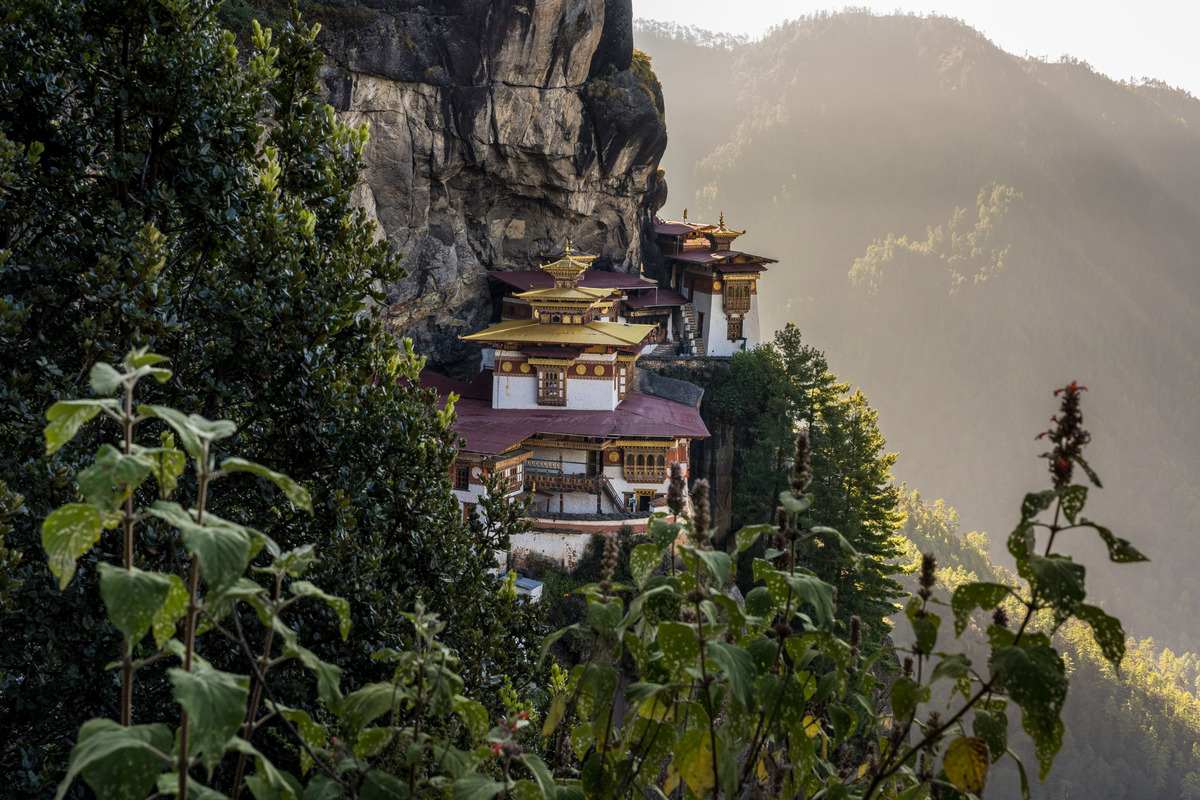
Experience Ancient Culture, Luxury and Serenity at this Himalayan Haven.
As I stroll across the courtyard of Cheri Monastery, a Buddhist sanctuary perched on the outskirts of Bhutan’s Thimphu Valley, I inhale freshly lit incense and stop to admire hand-painted murals—a riot of color, symbolism and spiritual storytelling. My guide, Namgay Tshering of Himalayan Foothills Travel, leads me up a wooden ladder into the inner temple, where a smiling, robed monk pours blessed water or trüchu, bright yellow from saffron, into my expectant hands. Cupping my palms to my mouth, I take a sip to cleanse myself of all negative thoughts, emotions and actions.
Then it hits me: Silence. We have this ancient place, the first monastery founded by Ngawang Namgyal, known as The Bearded Lama and the unifier of Bhutan as a nation-state, all to ourselves.
In an increasingly globalized world where many destinations struggle to combat growing crowds—UNESCO recently recommended that Venice’s world heritage site status be listed as “in danger” due to mass tourism—the Land of the Thunder Dragon maintains an authenticity and blissful remoteness that’s all too rare. Sometimes called the last Shangri-La because of its unspoiled natural beauty and unique culture, Bhutan belongs to an exclusive club of carbon negative countries and stands alone as the last remaining Vajrayana (Tantric) Buddhist kingdom, a school closely related to Tibetan Buddhism.
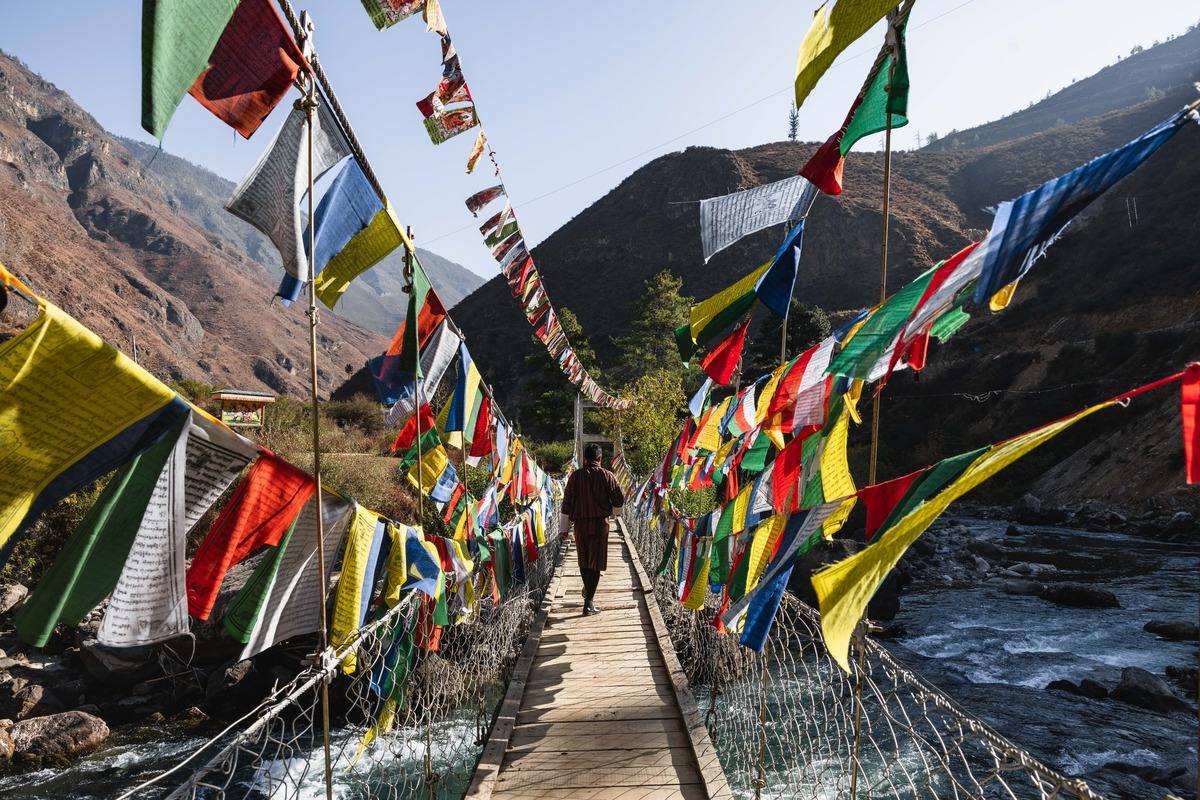
For many years, going to Bhutan proved as challenging as slipping onto the Paro Airport runway, sandwiched in a narrow valley between 16,000 foot mountains. The 45-degree landing may still be tough, but luckily for intrepid travelers, the immigration process has become considerably easier. While international tourists are required to pay a mandatory levy, the fee, which offsets visitors’ carbon footprint and contributes to Bhutan’s Sustainable Development Fund, was slashed by fifty percent to $100 per person per night until 2027. Travelers also no longer have to prebook entire itineraries with a minimum daily spend in order to get a visa, although hiring a guide is highly recommended.
These rules aren’t about keeping tourists out. Bhutan—known for its philosophy of Gross National Happiness—warmly welcomes responsible guests who invest time, thought, and yes, money, into their trips. Guided by a “high value, low volume,” policy, Bhutan carefully protects its culture, infrastructure and pristine natural resources, while ensuring that travelers enjoy an exceptional—and authentic—experience. Because of this, Bhutan has emerged as a luxe hotspot full of ancient, meditative temples, rich arts and crafts, some of the world’s best hiking, diverse wildlife and once-in-a-lifetime opportunities to receive blessings from lamas and monks. And then there are the hotels.
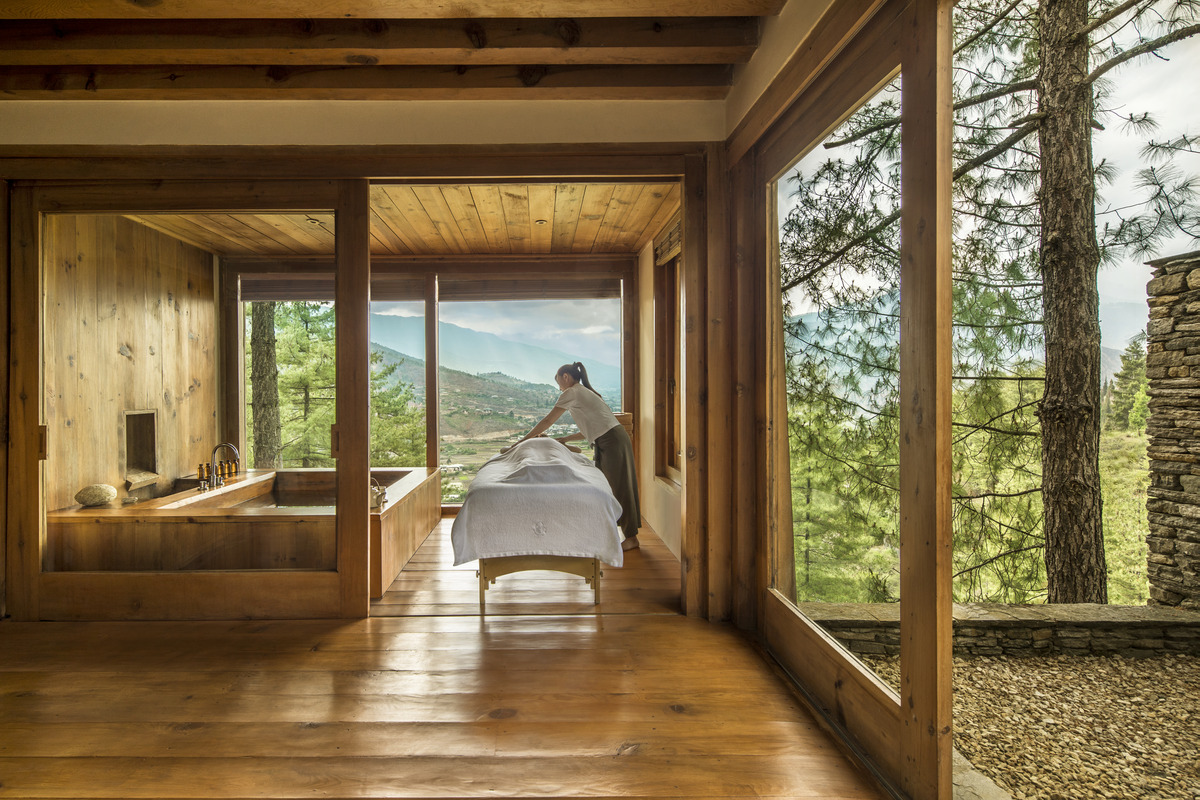
In the Land of the Thunder Dragon, luxury standards are set as high as the Himalayas themselves. One of the few international brands allowed inside the country’s tight borders: Aman Resorts. Aman’s founder, Adrian Zecha, has been visiting Bhutan since it first allowed tourists in the 1970s. When Amankora Paro opened in 2004, it became the country’s only international hotel, followed by Como and Six Senses a few years later. Today, the tiny kingdom—which is slightly smaller than Switzerland and has an estimated population of less than 800,000 people—offers a robust choice of more than 20 top properties, including five Aman lodges along Bhutan’s tourism circuit of lush valleys, known as the kora, the Dzongkha word for pilgrimage.
I begin my own journey at Amankora Thimphu, a 16-suite lodge designed by the renowned architect Kerry Hill in the style of a dzong fortress. Located within easy reach of the bustling capital’s shops and sights, I spend my days exploring Thimphu and its surrounds, watching a spirited archery competition at Changlimithang Stadium and dining on brutally spicy ema datshi (chili peppers and cheese) and momos (filled dumplings) at Phangu, a stylish restaurant owned by Bleu Dorji, a chef of noble ancestry. Each evening, Amankora Thimphu brings Bhutan’s culture right to my doorstep, surprising me with a private lecture with a Buddhist monk and a performance of the country’s joyful traditional dances—typically only seen at Bhutan’s famous festivals—by the spectacular Gaki Luyang ensemble.
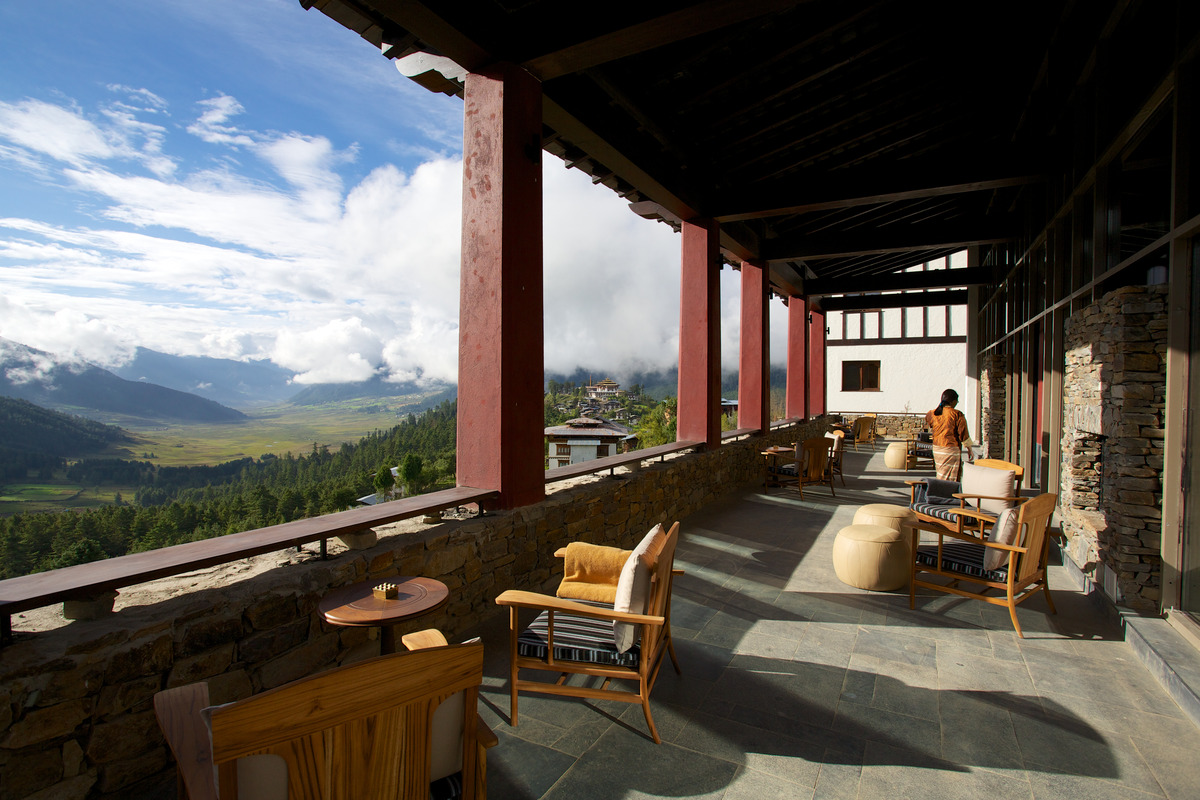
In this way, Bhutan’s luxury properties are similar to the lodges and camps you find across Africa. Far more than a place to lay your head at night, they become the de facto curators of your trip, feeding you (many bookings are all-inclusive), sending you off to the spa post-hike, and immersing you in the country’s heritage 24/7.
After a couple days in Thimphu, Namgay and I head on to Gangtey Valley, an area best known for the black-necked cranes that fly there from the Tibetan Plateau every fall. An important part of Bhutanese folklore, these graceful, rare birds—which some believe are the reincarnated souls of deceased lamas—purportedly bring a successful harvest to the region’s farmers.
My hotel, Gangtey Lodge, overlooks the valley the cranes have just left for their return migration; I’m not too disappointed, as you’d be hard-pressed to imagine a more beautiful spot to do absolutely nothing. I cozy up by the stone fireplace with a mug of butter tea, a local specialty, and gaze out at the mountains covered in a sea of scarlet rhododendrons. It’s time for the most grueling part of my day: a Bhutanese hot stone bath. Using medicinal herbs and river stones that have been roasted over a fire until they are bright red, this therapeutic treatment relieves deep aches and pains. Fortunately, Gangtey Lodge thoughtfully provides guests with everything you might need during a steamy soak, including iced tea, cookies, a cold compress and a post-bath massage just to make absolutely sure you’re extra relaxed.
The next morning, we drive back toward Paro, stopping along the way to search for some of Bhutan’s prolific birdlife—including the kaleidoscopic Himalayan monal and yellow-rumped honeyguide. Isolated and densely forested, Bhutan is quickly becoming one of the world’s top birding destinations thanks to its incredible biodiversity. The mountains are also home to enigmatic species like snow leopards, red pandas and Indian rhinos, but those typically prove much more challenging to locate. Rumor has it more robust safari offerings are on the way.
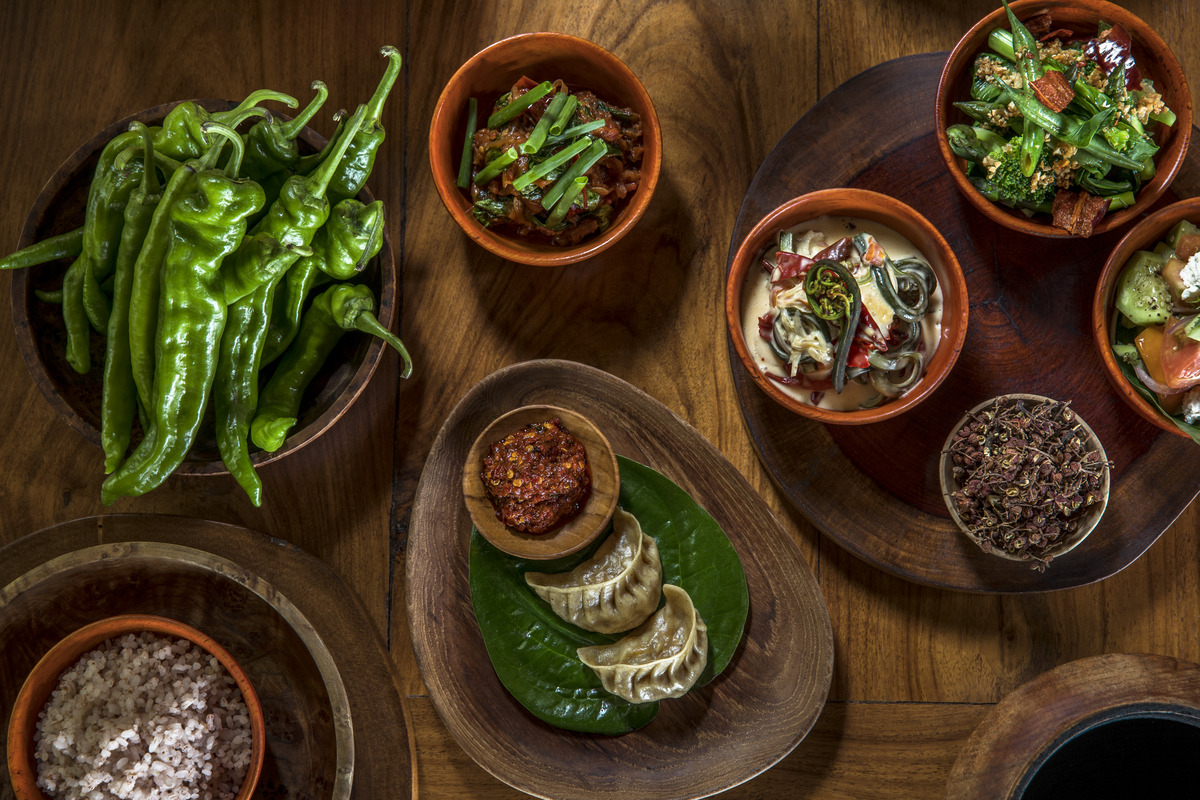
When we reach my final lodge, COMO Uma Paro, I’m famished and ready for a hearty meal at the hotel’s award-winning restaurant, Bukhari, a favorite of the Bhutanese Royal Family. While the property’s main building was, appropriately enough, once the home of a nobleman, I’m staying in one of the newer free-standing villas, which come with butler service and a panoramic view of Paro. The resort’s chic bar, decked out in red leather, is the perfect spot for a night cap of K5 Himalayan Whisky, the first whisky blended and bottled in Bhutan.
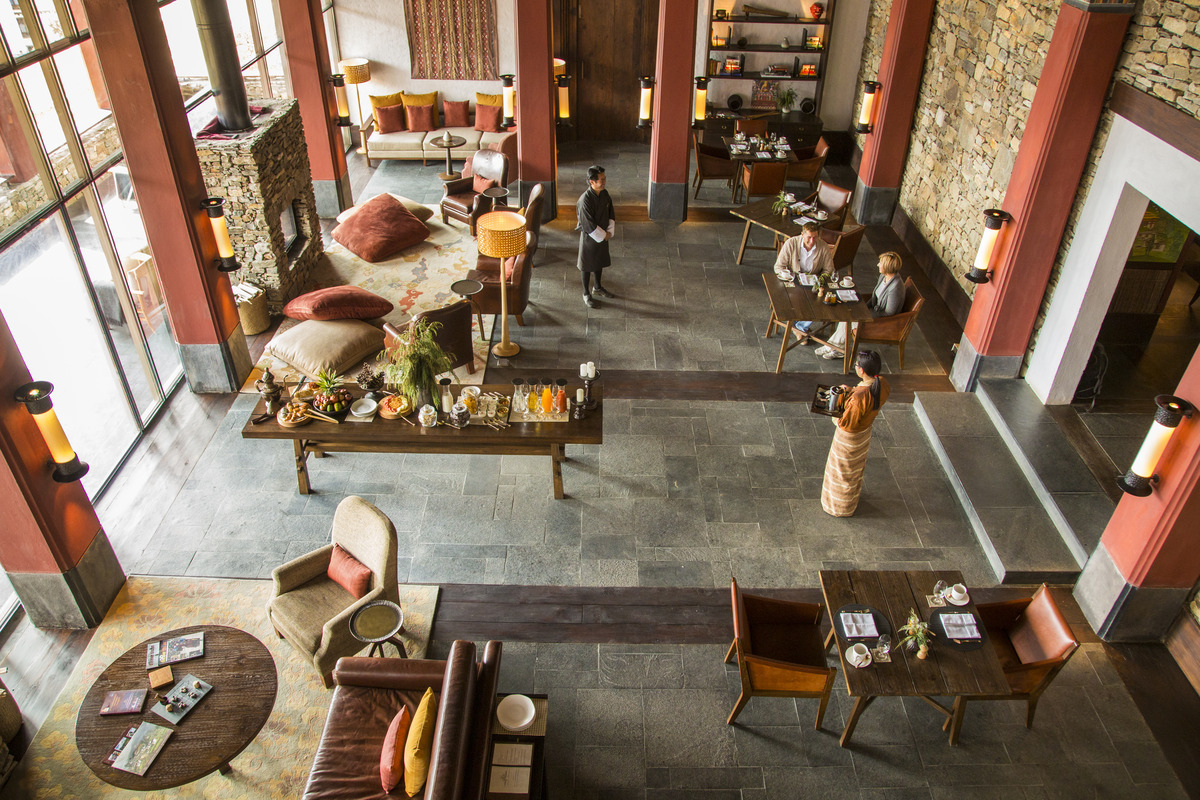
As my trip winds down, it’s time to check off my last bucket list items: Visit the iconic Tiger’s Nest Monastery teetering on the edge of a cliff in Paro Valley. Shop for precious dzi beads and antique wooden ceremonial masks in town. Stop by Kyichu Lhakhang, one of the most sacred and oldest Buddhist temples in the Himalayas, with roots dating back to the 7th century. It’s there, shaded by a fragrant orange tree, that I’m once again alone, unbothered by crowds. This time it is not silent; I can hear monks chanting, in a soft monotone, from the inside. Travel has never felt like more of a gift.
For more articles like this, check them out here!

